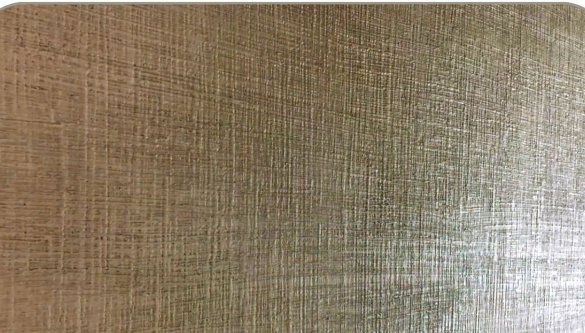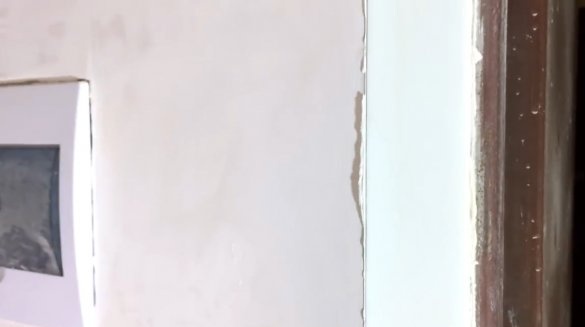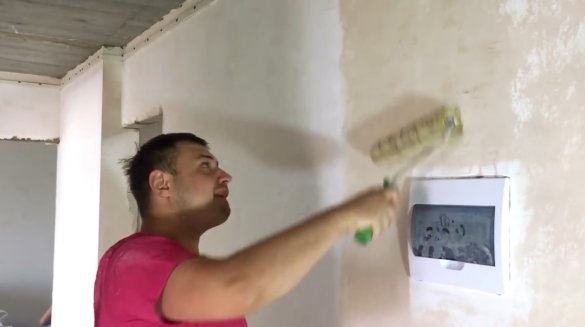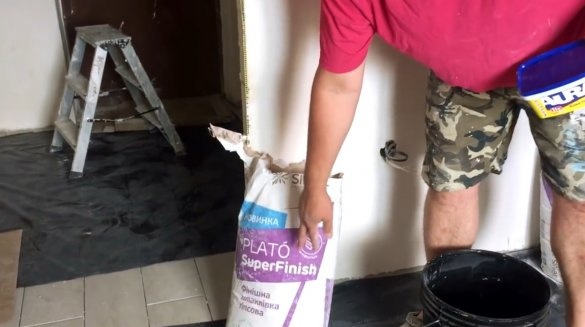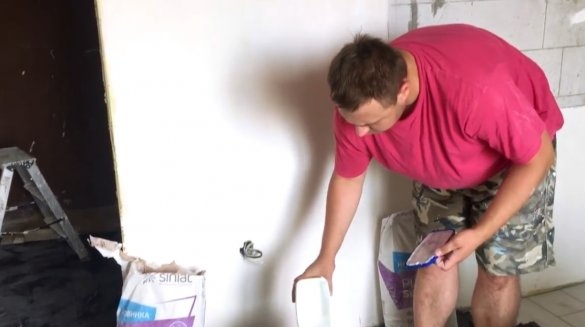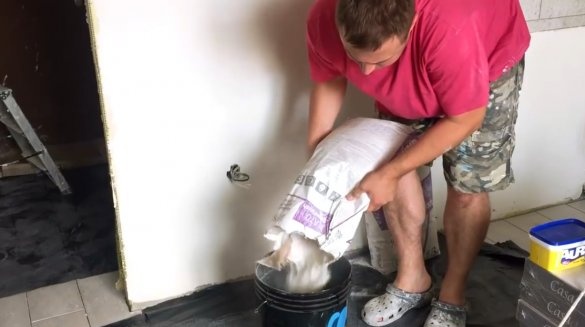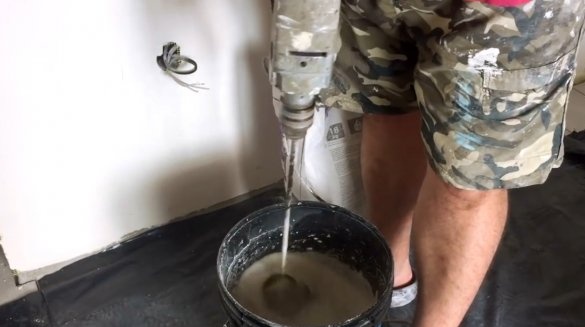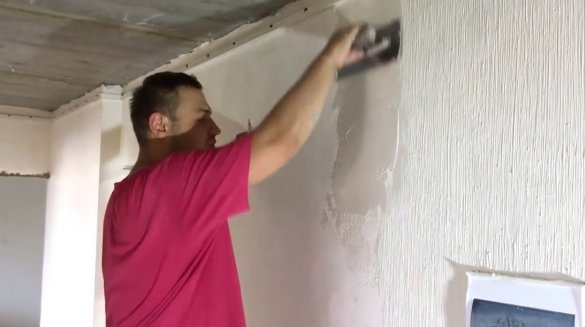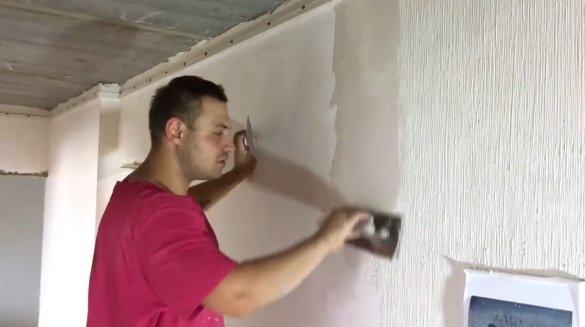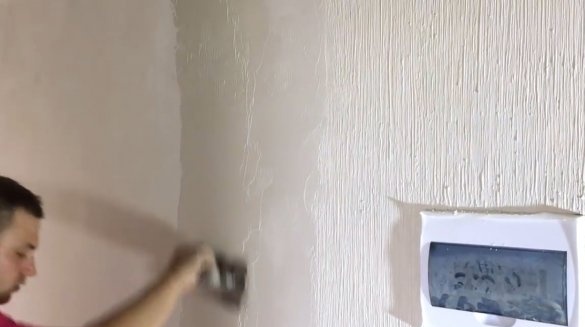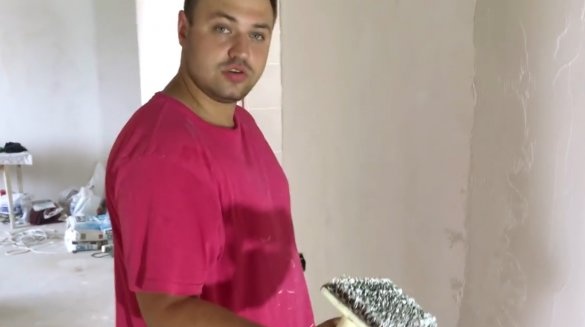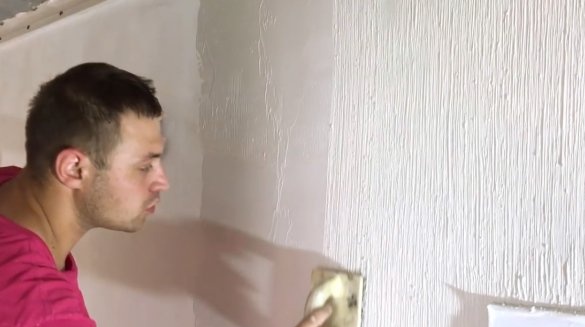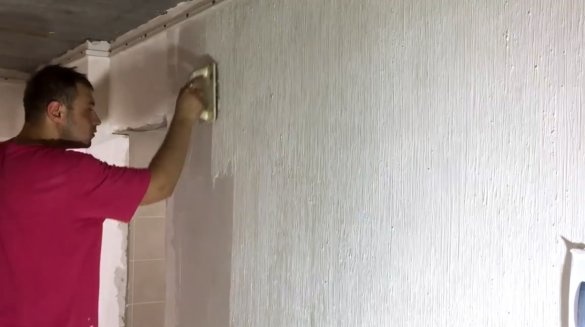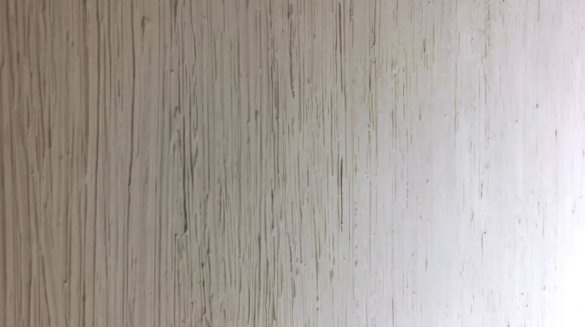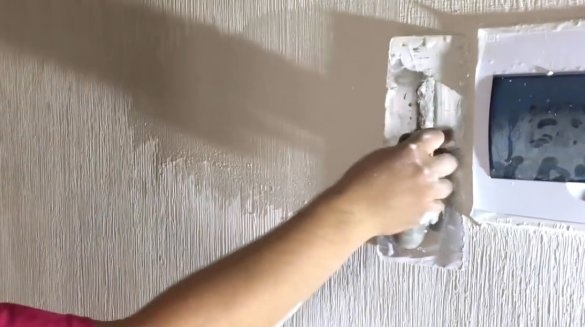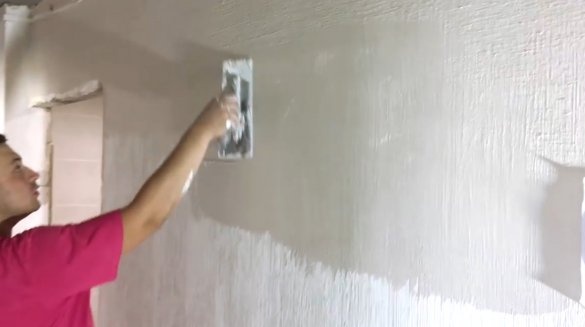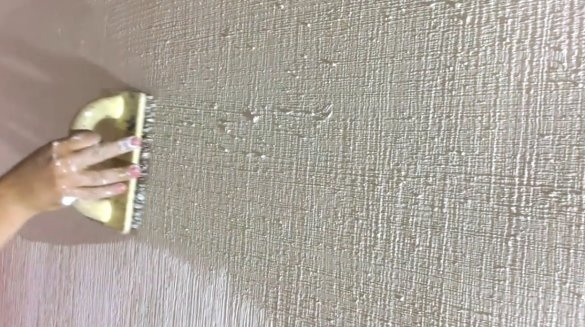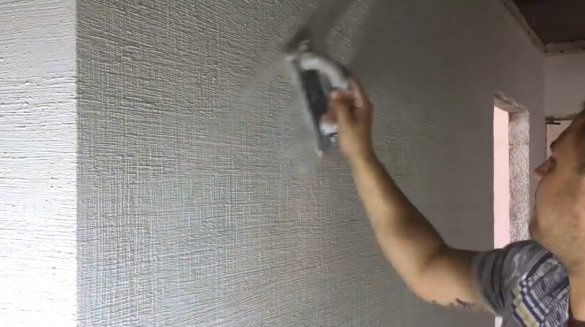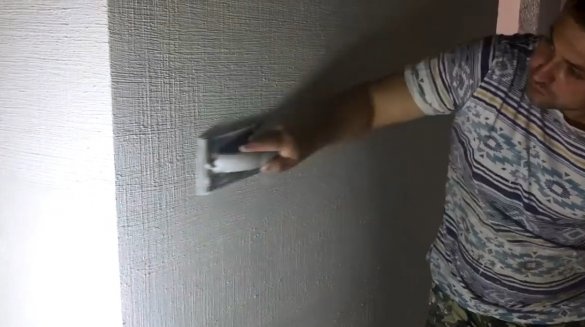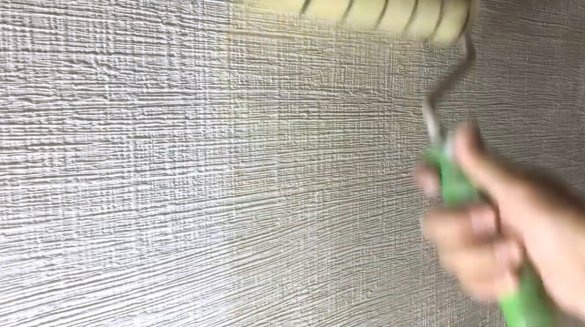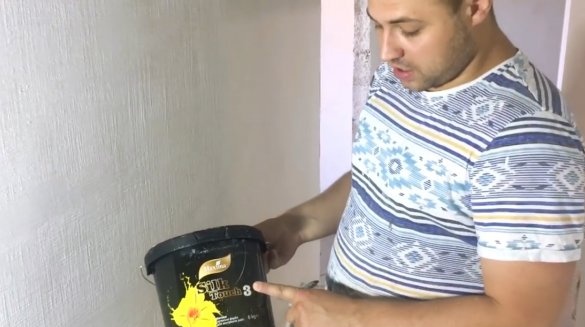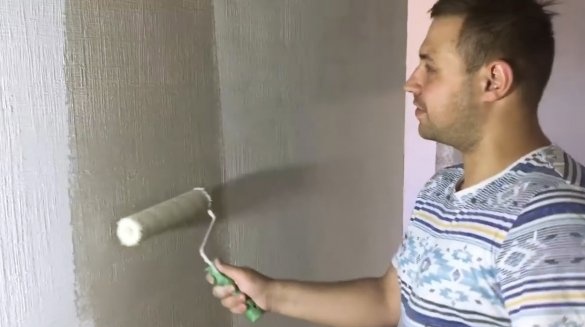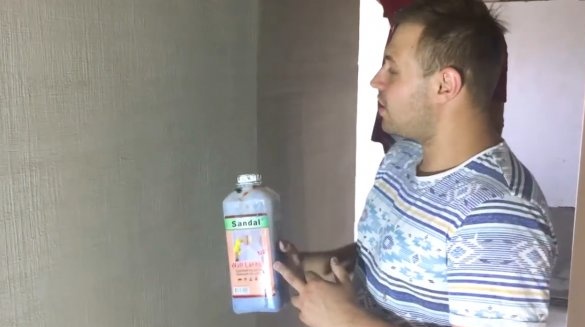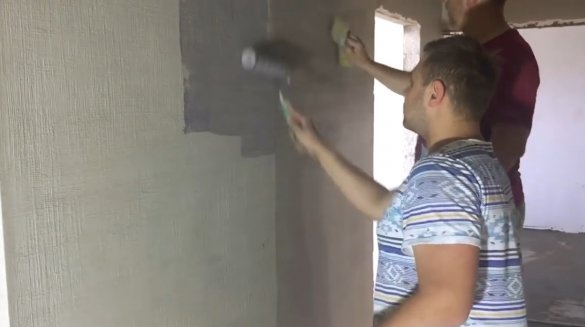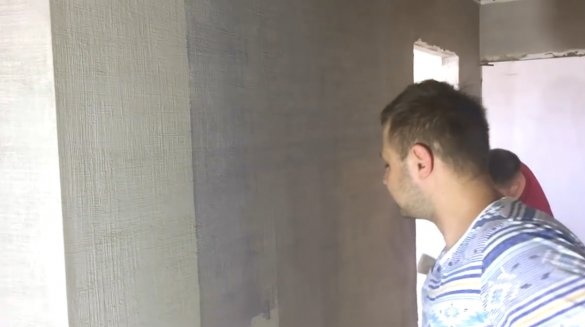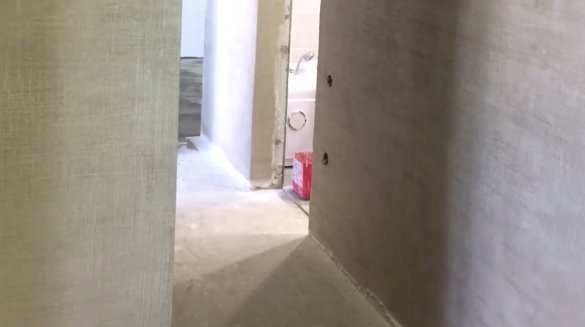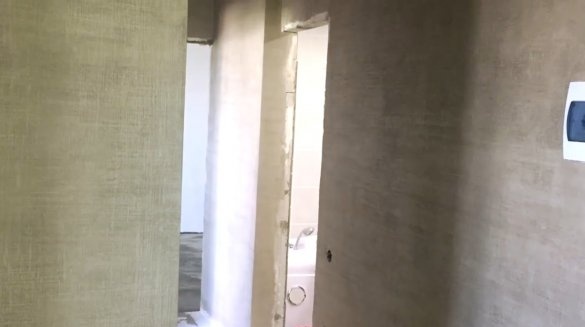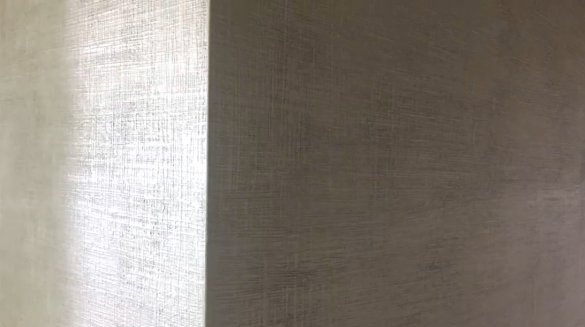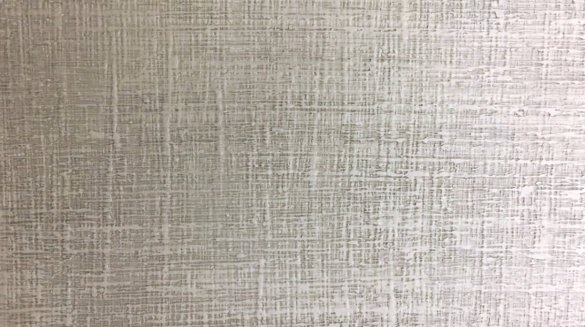Surely many of you carry out home repairs on your own, and are faced with finishing.
In this article, the author of the Stylish Decor YouTube channel will tell you how to finish using putty and give it a voluminous texture of burlap or canvas.
This type of coating allows you to hide some wall defects, and save on the purchase of wallpaper. It is quite simple to perform, and does not require the use of special putty.
Materials
- Putty finishing
- Primer
- Latex paint, colorizer
- Acrylic lacquer
- PVA glue
- Sandpaper
- Masking tape.
Instruments, used by the author.
- spatula, roller
- Sandpaper holder
- Foam sponge
- Brush "1000 lines"
- Atomizer
- Rotary hammer, mixer nozzle
- A container for mixing putty components.
Manufacturing process.
First of all, after applying the starting putty, all surfaces are thoroughly primed. The author prefers to use a roller for this.
When the primer has dried, the next step begins. The required amount of water is collected in a clean bucket, and PVA glue is added to it. This will give the mass elasticity. Then he pours the finishing putty into the container and mixes it with a mixer.
Electric shields and sockets are closed with masking tape, or covers are removed from them. Now putty is applied to the wall in vertical stripes.
While the primer is still wet, the author makes vertical stripes with such a brush. Before use, it must be moistened with water. Excess putty can be easily removed from the brush by tapping it lightly on the wall.
The next day, after the first decorative layer dries, the putty is applied in horizontal stripes.
Since during the work it was very hot and the air was dry, the putty surface had to be moistened.
Now horizontal stripes are applied with a brush.
The next day, the surface is treated with fine sandpaper, so the surface is leveled and small defects are removed.
To bond the surface and remove dust, the walls should be primed again.
The master colorized latex paint in burlap color, these were the wishes of the customer. Then he paints the walls.
To give greater contrast to the picture, the author uses acrylic varnish with the addition of black pigment. In this process, it is best to work together. The first applies a layer of varnish with a roller, and the second rubs it with a foam sponge, filling the pores.
Here is such an unusual, but reliable and beautiful coating turned out.
I thank the author for the simple, but very interesting finish coating technique!
All good mood, good luck, and interesting ideas!
Author video can be found here.

